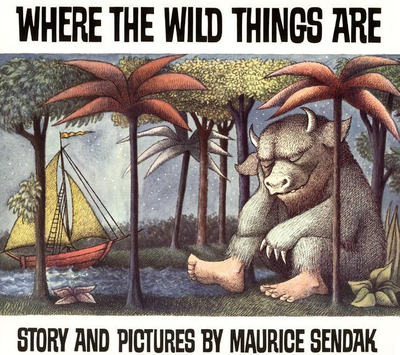Joseph Conrad’s colonial fable Heart of Darkness has infected TS Eliot, been excoriated for racism by Nigerian writer Chinua Achebe and transplanted to Vietnam by Francis Ford Coppola is now out the form of a graphic novel.
Artist Catherine Anyango reveals how richly-detailed drawings reflect the dense style of Joseph Conrad’s savage colonial story.
Now the book has been reinterpreted as a graphic novel in whose monochrome pages Conrad’s exploration of power, greed and madness plays out as disturbingly as ever.
Catherine Anyango, whose drawings are peppered with David Zane Mairowitz’s adaptation of the text, had her doubts about tackling the Polish-born novelist’s most famous work.
Those reservations had more to do with the original medium than the enduring controversy over Conrad’s views or the familiarity of Heart of Darkness.
“I wasn’t sure initially if it was a good subject for a graphic novel as the writing is so dense and the style of it is partly what attracts me to the book,” she said.
“As I knew we couldn’t keep most of the text in, I tried to make the drawings very rich in detail and texture so that immersing feeling you get, especially when he describes the river and the jungle, was carried across.”
Anyango was determined not to allow the horror of the book’s subject matter to overwhelm her drawings. “I wanted to draw the reader in with seductive imagery, and then show them that even in the most beautiful of settings, terrible things can happen.”
There was also Coppola’s 1979 epic to contend with.
“I was too terrified to watch Apocalypse Now,” the Kenyan-Swedish artist said. “Partly because I didn’t want to end up with any similar visuals and also I had been warned that something nasty happens to a cow … Apocalypse Now is huge and well, apocalyptic, but Heart of Darkness is a much quieter story.” (Ahem!)
Anyango, who grew up in Kenya where she went to a British school, wanted to steer a course that was as true as possible to the original so that her version did not sink under the weight of too much intellectual baggage.
“When I was dealing with the book, I was focused solely on the particular events of the Congo, rather than colonialism in general,” she said. “I wasn’t trying to tell the history of colonialism either, but to situate this particular narrative in a way that people might ask: what on earth was the attitude of that time that these things could happen?”
To reinforce the geographical and historical immediacy of Conrad’s tale, the graphic novel is interspersed with excerpts from The Congo Diary – the journal Conrad kept of his 1890 voyage up the river.
Anyango’s research also led her to the story of a man from a village in the Upper Congo called Nsala. She came across a photograph of him sat on a step contemplating the hand and foot of his daughter, which had been cut off by guards sent to his village by the Anglo Belgian India Rubber Company. The men, ordered to attack Nsala’s village for failing to provide the company with enough rubber, devoured his wife and daughter, leaving only the child’s hand and foot.
“I put him on one page, and similar portraits on others, so the Congolese characters have resonance at least for me, even if they remain stereotyped because of the existing narrative,” she said.
In her efforts to ensure the authenticity of the uniforms she drew — the protagonist, Marlow, is given a cap with a prominent Belgian lion badge — Anyango was shocked to discover how markedly Belgian perceptions of the occupation of Congo still vary.
For some, it is a shameful episode in the country’s history, while others still view it as a benign experience despite the evidence uncovered by recent histories such as Adam Hochschild’s 1998 book, King Leopold’s Ghost, which laid bare the barbarism inflicted on Congo.
The artist found that Belgium’s colonial deeds “seem to have vanished into history, with the [country’s] education system not dwelling on anything but positive aspects of the colonial rule”.
That may not be not wholly surprising: at her school in Nairobi, Anyango did not learn about Britain’s colonies.
It is this creeping colonial amnesia — not to mention a catalogue of recent and current events — which, she argues, give Heart of Darkness both its relevance and its universality.
“It’s about the idea of entitlement; how through the ages we enforce our feelings of entitlement in whatever way that age will allow — from Leopold II owning the Congo as a private possession to the corporations involved with blood diamonds. The effects of entitlement have not so much gone out of fashion as out of sight.”
Dr Keith Carabine, who teaches literature at the University of Kent and chairs the Joseph Conrad Society, agrees that Kurtz, the ivory trader whose misplaced idealism has putrefied into savagery and madness, has become an archetypal figure.
“Heart of Darkness is the most important book in the last 100-plus years not because it’s the best, but because it anticipated how 20th century leaders with visions of bringing light and creating new models for humans beings – Hitler, Lenin, Pol Pot, Mao – all ended up,” he said. “When disappointed by the response of the very groups they wanted to save or help or transform, they, like Kurtz, wish to (and actually do, of course) ‘exterminate all the brutes!'”
Of the Edwardian novella’s continuing relevance, Carabine is unequivocal. “If Bush and Cheney and the neocons had read Heart of Darkness and understood it, they would not have invaded Iraq under the absurd utopian illusion that the Iraqis were gagging for democracy.”










